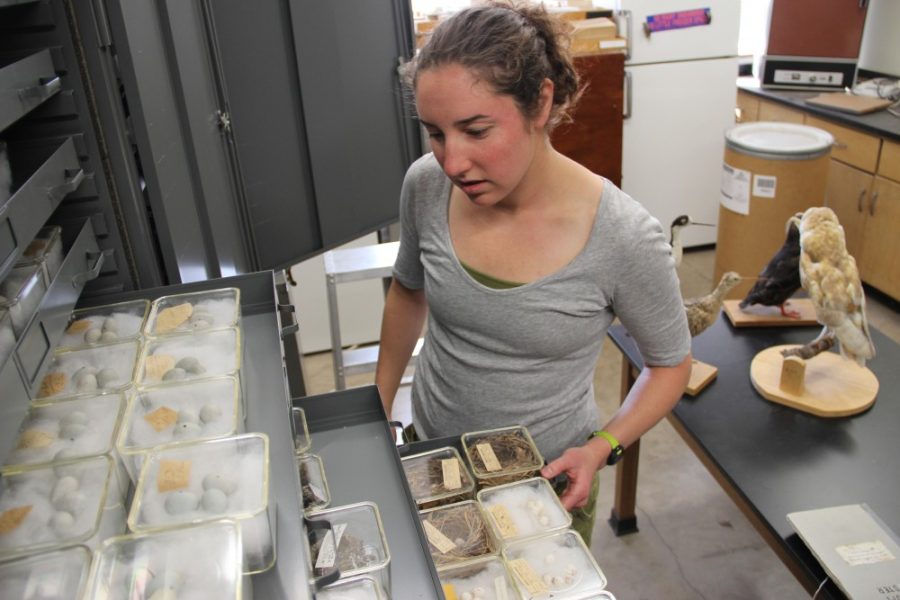When the UA’s bird collection was started in 1884, curator Herbert Brown was tasked with cataloging the hundreds of nest, bird and egg specimens he collected by hand, and the only way to see those specimens was to visit the campus in-person. With the advent of the Internet, the roughly 20,000 species in the collection are now just a click away.
Housed in the UA’s Museum of Natural History, the ornithological collection includes specimens ranging from an Adélie penguin from Antarctica to multiple California condors, which can have a wingspan of around 10 feet. Combined with four other extensive collections that exhibit mammals, fish, reptiles and marine invertebrates, the museum contains nearly 300,000 animal specimens, many of which were collected in the Sonoran Desert.
“This is a library of the biodiversity that’s here in this region,” said Peter Reinthal, director of the museum. “Both the specimens and the information associated with them are extremely valuable.”
To share that value with the public, much of the bird collection is available for viewing in an online database on the museum’s website. The site allows visitors to browse the collection or search for specific species. Many entries include pictures of the species as well as information about where the specimen was found.
In addition to the website, a new software program allows users to visualize the different bird species in terms of their evolutionary relationships.
Mike Sanderson, a professor in the department of ecology and evolutionary biology developed the program, which places each picture on an “evolutionary tree of life,” allowing users to zoom in and fly by the entries while getting perspective on how each species is related.
“It’s a different way to interact with the collection,” Sanderson said. “[Viewers] are not physically picking up a jar with a Gila monster in it, but they’re interacting with the images and also learning something at the same time.”
Sanderson named the program Ceiba, after the tropical tree the Maya civilization believed connected the underworld to the heavens. The software is part of a “huge worldwide effort” to make natural history collections available for viewing on the Internet, he said.
The technology, which could someday be used in an exhibit or presentation on bird evolution, represents a novel approach to the organization of such a collection, said Erin Morrison, a graduate student in the department of ecology and evolutionary biology, who recently updated the taxonomic information for the bird collection.
“It’s really hard to visualize how things are related to each other,” Morrison said. She explained that the program enables people to not only visualize the relationships between two species, but also track changes over time.
Morrison said she is considering conducting a study to determine how a certain bird species’ color has changed over the last century, which requires having a physical sample to analyze.
“I can go in and get a feather from a bird from 100 years ago and compare the color contents of that feather to a feather from a present-day bird,” she said, “and the only way I can do that is because of the collection.”
Down the road, Sanderson said, he would like to enable users to post their own photos, which could be incorporated into the evolutionary tree in real-time.
“Everybody loves to take photographs of plants and animals that they see,” he said. “[The program provides] a way to get people excited about biodiversity and teach them some cool stuff at the same time.”
—Follow Mark Armao @MarkArmao









